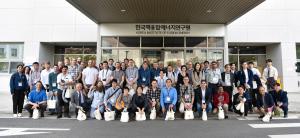Aligning technology and physics
The 22nd Workshop on Electron Cyclotron Emission (ECE) and Electron Resonance Heating (ECRH)—held in Daejeon, South Korea, from 22 to 26 April, focused on this topic, bringing together more than 80 scientists working worldwide on electron cyclotron theory, experiments, diagnostics and technology.
Contributions by ITER scientists and on ITER-related topic represented a strong focus of the workshop along with recent updates on various devices such as DIII-D, ASDEX Upgrade, KSTAR, and W7-X, and highlighted the importance of integrated development that aligns technological needs and physics applications.



